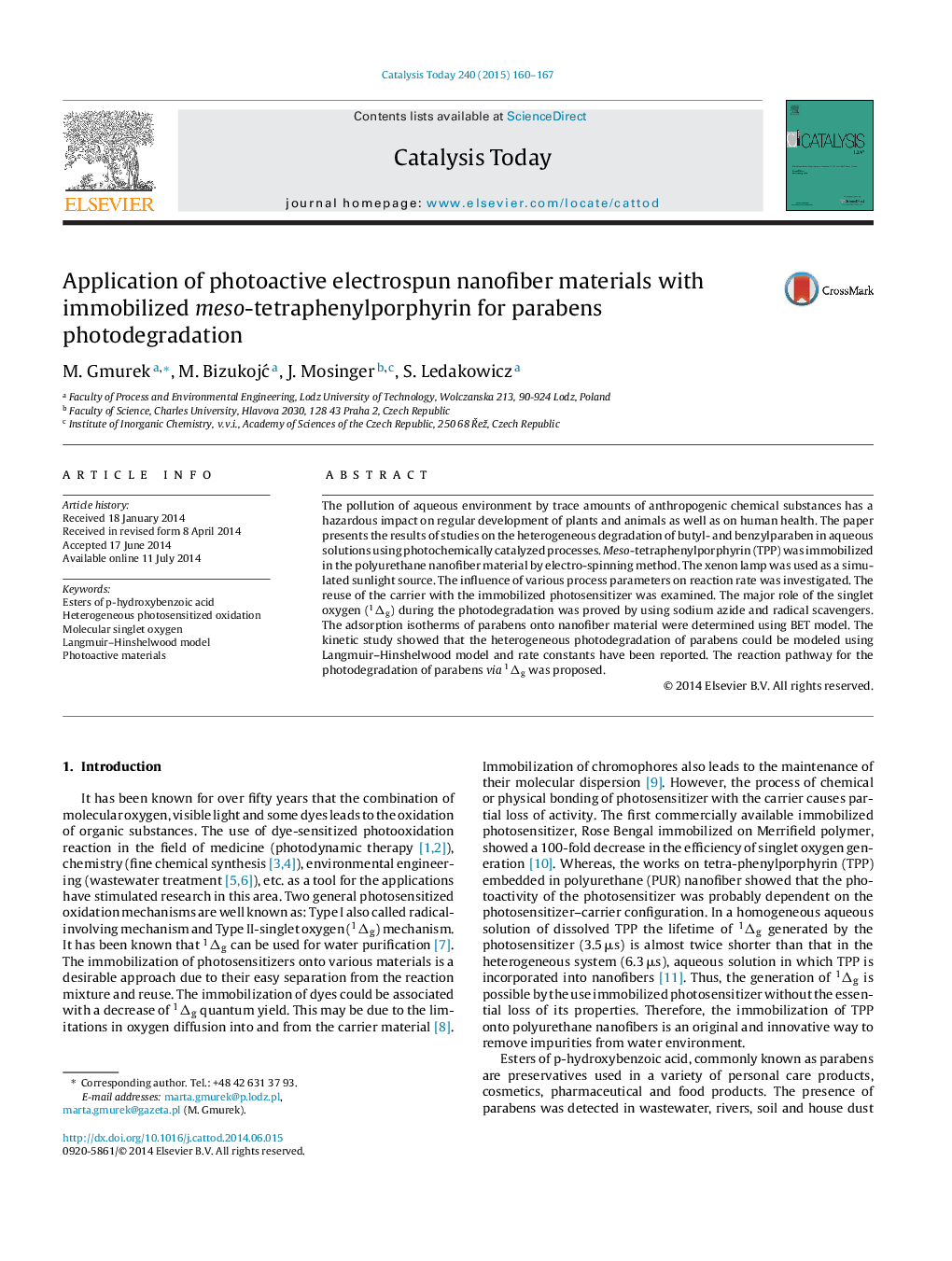| Article ID | Journal | Published Year | Pages | File Type |
|---|---|---|---|---|
| 54442 | Catalysis Today | 2015 | 8 Pages |
•Parabens can be efficiently degraded by photoactive material with immobilized dye.•The major role of singlet molecular oxygen in this process was proved.•Addition 0.3 wt% of zinc phthalocyanine increases significantly reaction rate.•The nanofabrics with immobilized photosensitizer can be reused.•Kinetic parameters were established using Langmuir–Hinshelwood model.
The pollution of aqueous environment by trace amounts of anthropogenic chemical substances has a hazardous impact on regular development of plants and animals as well as on human health. The paper presents the results of studies on the heterogeneous degradation of butyl- and benzylparaben in aqueous solutions using photochemically catalyzed processes. Meso-tetraphenylporphyrin (TPP) was immobilized in the polyurethane nanofiber material by electro-spinning method. The xenon lamp was used as a simulated sunlight source. The influence of various process parameters on reaction rate was investigated. The reuse of the carrier with the immobilized photosensitizer was examined. The major role of the singlet oxygen (1Δg) during the photodegradation was proved by using sodium azide and radical scavengers. The adsorption isotherms of parabens onto nanofiber material were determined using BET model. The kinetic study showed that the heterogeneous photodegradation of parabens could be modeled using Langmuir–Hinshelwood model and rate constants have been reported. The reaction pathway for the photodegradation of parabens via1Δg was proposed.
Graphical abstractFigure optionsDownload full-size imageDownload high-quality image (75 K)Download as PowerPoint slide
